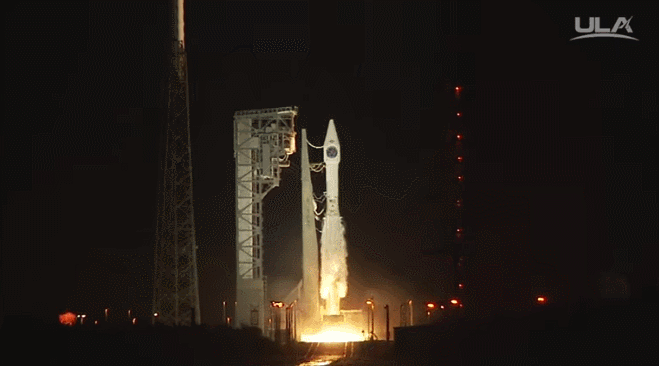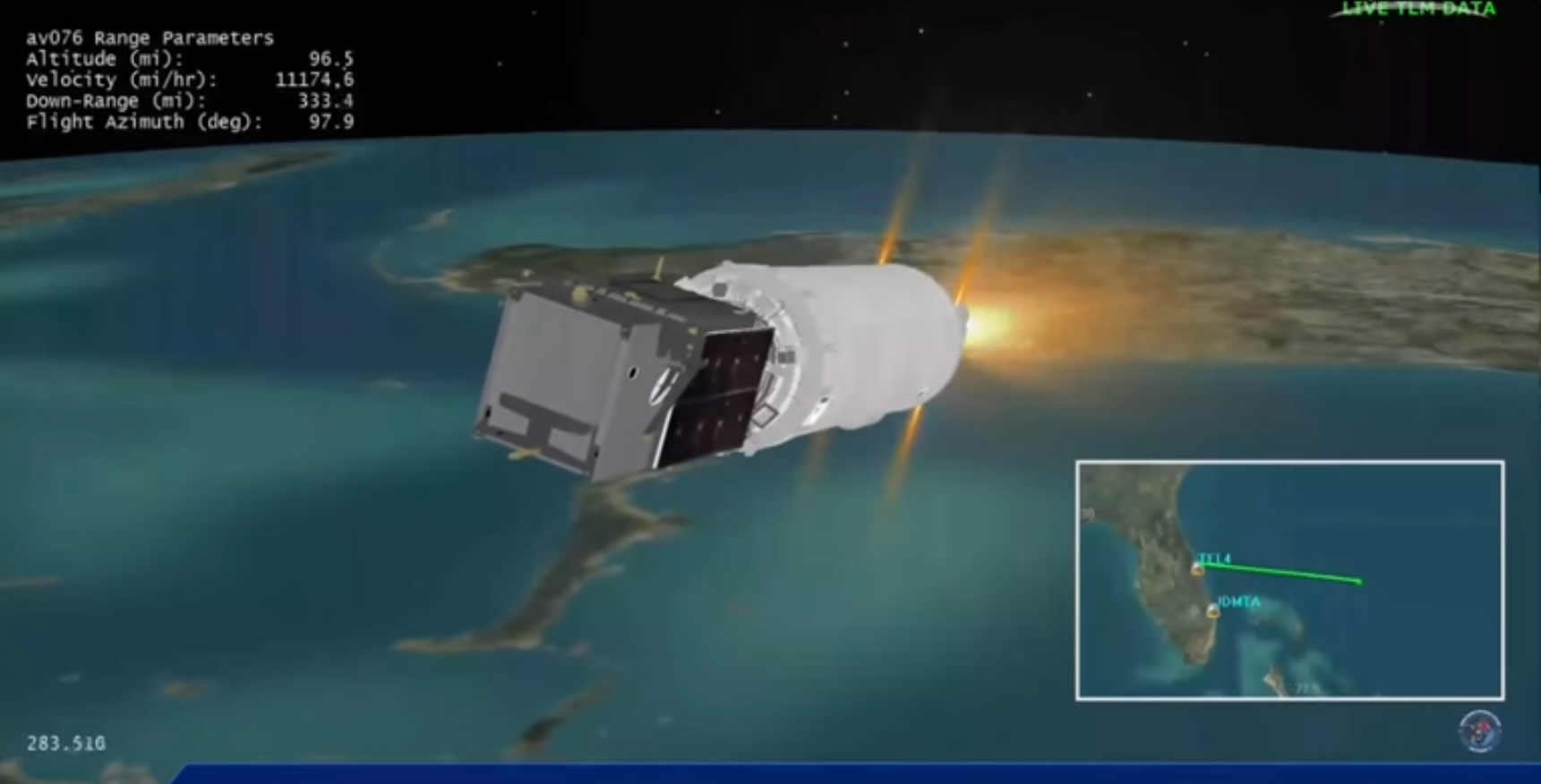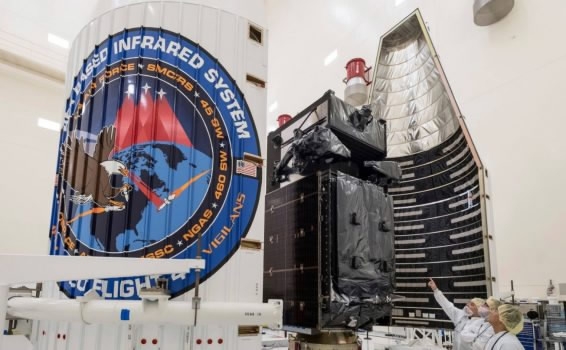
space
17:43, 21-Jan-2018
Atlas V rocket launches missile warning satellite for US Air Force

A United Launch Alliance (ULA) Atlas V rocket launched a new missile-warning satellite Friday night from Cape Canaveral Air Force Station, Florida in the US.
After a one-day delay, the Atlas V rocket lifted off at 7:48 p.m. EST (0048 GMT Saturday) from Space Launch Complex 41, carrying the Space Based Infrared System (SBIRS) GEO Flight 4, a new military satellite mission.
"Now, we get the satellite ready to provide missile warning to our nation and our war fighters," Air Force Space Command tweeted Friday.
The satellite will eventually move into a geosynchronous orbit 35,786 km above the Earth, allowing it to keep watching over the same region of the planet.

The satellite orbiting after being successfully launched. /ULA Photo
The satellite orbiting after being successfully launched. /ULA Photo
SBIRS, considered one of the country's highest priority space programs, is designed to provide global, persistent, infrared surveillance capabilities to meet 21st century demands in four national security mission areas: missile warning, missile defense, technical intelligence and battle-space awareness, according to a ULA mission description. Air Force Space Command operates the SBIRS system.
The SBIRS GEO Flight 4 is the fourth in a series of Air Force missile-detection satellites designed to use advanced scanners and infrared detectors to track launches of ballistic missiles.
"Meeting the challenge of launching two critical national security missions from opposite coasts within a week, the entire ULA team once again demonstrated its unwavering dedication to 100% mission success," Laura Maginnis, ULA vice president of Government Satellite Launch, said in a statement.
The launch marked the first flight of an Atlas V rocket in 2018 and the second mission of the year for ULA, a joint venture between the aerospace companies Boeing and Lockheed Martin.

SBIRS GEO-4 /ULA Photo
SBIRS GEO-4 /ULA Photo
A ULA Delta IV rocket launched the classified NROL-47 spy satellite for the National Reconnaissance Office (NRO) on January 12.
This is also the 75th launch of the Atlas V rocket and the 125th successful launch since the ULA was formed in December 2006, according to the company.
The SBIRS GEO Flight 4 satellite follows the January 2017 launch of its predecessor, SBIRS GEO Flight 3. Two earlier satellites, SBIRS GEO Flights 1 and 2, have been operational in orbit since 2013.
The ULA's next launch is the GOES-S mission for the US National Aeronautics and Space Administration (NASA) and the National Oceanic and Atmospheric Administration (NOAA) on an Atlas V rocket. The launch is scheduled for March 1 from Space Launch Complex 41 at Cape Canaveral Air Force Station.
12224km
Source(s): Xinhua News Agency

SITEMAP
Copyright © 2018 CGTN. Beijing ICP prepared NO.16065310-3
Copyright © 2018 CGTN. Beijing ICP prepared NO.16065310-3